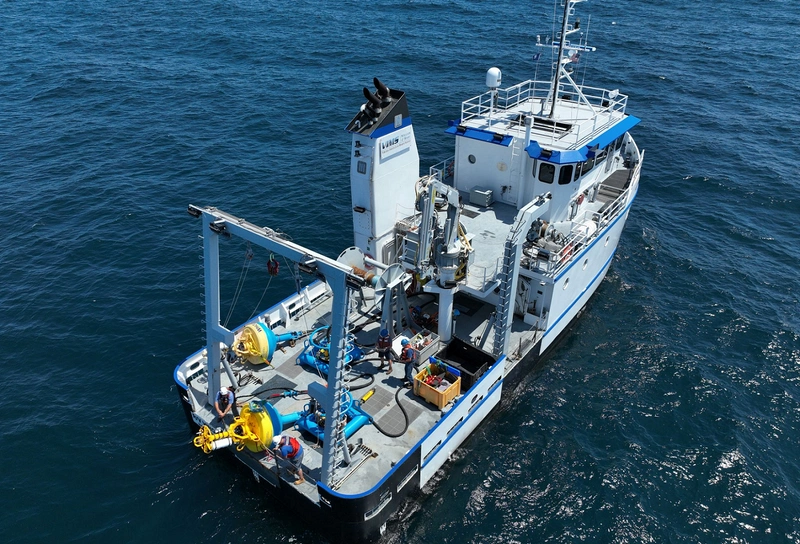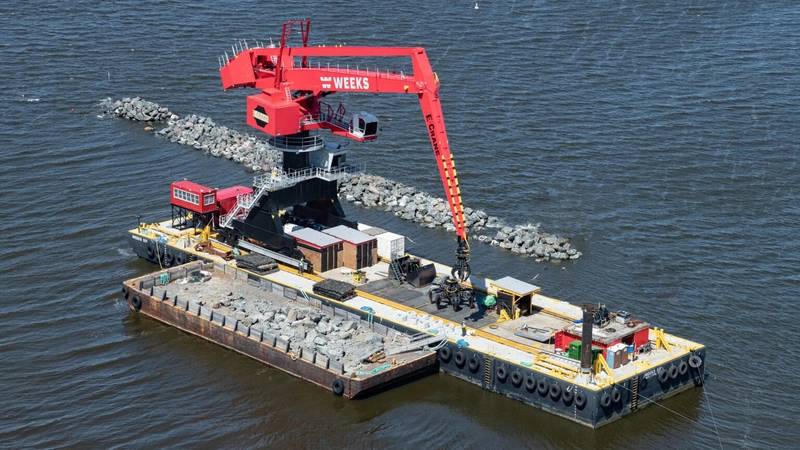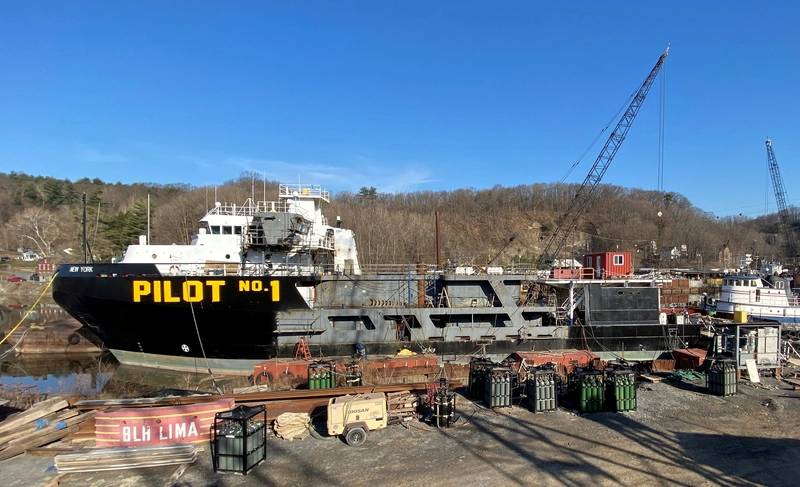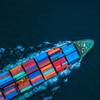Insights: Blake Powell, JMS Naval Architects
Blake Powell, president at JMS Naval Architects, discusses his career, company and latest trends in naval architecture and marine engineering.
Please give a brief professional bio, including education, experience and overview of current duties as president of JMS Naval Architects.
I earned my degree in Naval Architecture from the University of California, Berkeley where I attended on a Navy ROTC scholarship and was commissioned as a Diving and Salvage Officer after I graduated. After Dive School, the Navy sent me to a 212-foot rescue and salvage tug in Hawaii, where I served as the ship’s assistant engineer straight out of college. I immediately applied my marine engineering academics to running a real-world engineering plant. The experience was immeasurable. After leaving the Navy, I went to work for JMS Naval Architects which, at the time, was doing a lot of work supporting the U.S. Navy Supervisor of Salvage. Salvage engineering and marine casualty response were the focus in the wake of the Exxon Valdez and the implementation of OPA 90 in the commercial marine industry. Since that time, we’ve grown the business to provide full service naval architecture, marine engineering, salvage engineering and marine surveying services to commercial and government customers. I’ve been the President and Principal for over 12 years.
Why did you choose to enter the naval architecture field, and what do you like most about the profession?
Who doesn’t like messing about in boats? I grew up sailing in New England. My summer jobs in high school involved working on boats. Naval architecture seemed like a natural degree to pursue. Berkeley offered a great program, and the Navy offered a great opportunity. It all just came together pretty naturally. The best part about my job is that I still get to spend time underway on all kinds of ships all over the world conducting inspections, marine surveys and sea trials.
How would you describe JMS Naval Architects to someone who may not be familiar with the company? In your opinion, what are some of the firm’s greatest strengths?
We provide both complete ship design as well as engineering consulting services to help our customers manage their fleet of vessels. Although we focus on the workboat segment of the marine industry, we have a very diverse customer base. Our customers own and operate research vessels, heavy lift barges, floating dry docks, tugs, amphibious passenger vessels, historic vessels, you name it.
Our greatest strength is our people who approach each project with a solid understanding of our customers’ operational needs and apply practical, deck plate experience to come up with innovative but pragmatic engineering solutions. Our naval architects have to be multidisciplinary and get their hands in all aspects of a project. They’re smart and creative and they get excited about anything that floats.
 JMS designed the 93-foot research vessel Virginia, built by Canada’s Meridien Maritime Reparation for Virginia Institute of Marine Sciences. (Photo: JMS Naval Architects)
JMS designed the 93-foot research vessel Virginia, built by Canada’s Meridien Maritime Reparation for Virginia Institute of Marine Sciences. (Photo: JMS Naval Architects)
What's new from JMS Naval Architects. Will you please share updates or details about some noteworthy projects that you're working on or recently completed?
There’s always something new. We don’t do a lot of the same work twice. Our projects are pretty unique as are most of our customers, but that’s what keeps the job interesting.
JMS recently completed the design of a 125-foot research vessel for Louisiana Universities Marine Consortium (LUMCON) in Cocodrie, La. The multipurpose research vessel will support a variety of oceanographic missions in the Gulf of Mexico and Mississippi Delta. It’s outfitted with a 1,600-horsepower (HP) propulsion system, 150 HP bow thruster, dynamic positioning system, several oceanographic winches, two A-frames for launch and recovery of instrumentation, a complex suite of hydroacoustic systems, and accommodations for up to 24 crewmembers and scientists. The shipyard solicitation is currently out and the vessel should be under construction shortly.
We’ve also seen a lot of interest lately in dry docks, partly because of MARAD’s grant program for small shipyards to modernize their facilities and replace aging infrastructure. We’ve designed several dry docks that have been funded through the grant program. One of our floating dry dock designs is currently under construction at a shipyard in New York. Another JMS designed floating dry dock was recently built by Conrad Shipyard for Biblia Marine Towing and Transportation in Savanna. They use the 120-foot, 500 LT dry dock primarily to service their own tugboats but also offer similar repair and maintenance services to other vessel owners in the area from their Savannah River facilities.
JMS has seen several new crane barge designs built recently and has supported several projects to retrofit cranes onto existing barges as well. A pair of 250- by 64-foot barges was designed to support E-crane 3000 series stevedoring cranes for Weeks Marine and built at C&C Marine and Repair. The cranes run on deck mounted rails to allow the cranes to travel the full length of the barge and are well suited for loading and unloading bulk material. JMS also prepared a modification package to install rails on an existing barge for the installation of another E-crane 3000 series crane for another customer. Another JMS designed crane barge was delivered to Sims Metal Management in Jersey City, N.J. to support a Liebherr LHM-600 Mobile harbor crane at their facilities the Port of New York and New Jersey. The 240 ft x 72 ft barge was built by Sterling Shipyard in Port Arthur, Texas.
They’re all fun projects and it’s very satisfying to see our technical solutions and designs become a reality and be put hard to work for a customer.
 A pair of 250- by 64-foot barges was designed by JMS and built at C&C Marine and Repair to support E-crane 3000 series stevedoring cranes for Weeks Marine. (Photo: JMS Naval Architects)
A pair of 250- by 64-foot barges was designed by JMS and built at C&C Marine and Repair to support E-crane 3000 series stevedoring cranes for Weeks Marine. (Photo: JMS Naval Architects)
Do you see trends and advancements in naval architecture (and vessel technology) that you find particularly interesting or exciting? Please explain.
Certainly, the electrification of vessels as well as the integration of various “green” technologies has gained a lot of attention and provides opportunities for JMS to assist our customers in developing new designs or modifying existing vessels with new technologies to meet their operational goals. There are also real challenges in balancing the rapidly evolving technologies with the regulatory environment and the customers’ operational needs. Those three elements are critical to a successful project but they’re not always well aligned. It requires a collaborative approach with all stakeholders, which is something JMS can facilitate.
What are the top challenges/concerns facing your firm today, and what's your approach to dealing with them?
People! One challenge is the limited number of naval architects working for independent engineering firms like JMS. Workloads ebb and flow, but without enough experienced engineers it becomes difficult to take on every client and opportunity that may surface. We’re fortunate at JMS to have smart, talented naval architects who are really enthusiastic about boats. But we need a steady stream of people entering the maritime industry who are committed to the industry. We also see our customers facing similar challenges in recruiting and retaining crew. It’s definitely an industry-wide problem.
Another challenge is the significant increase in the cost of materials and equipment lately which has impacted vessel owners’ projects. This has heightened the importance of keeping our engineering solutions practical and cost effective.
 JMS Naval Architects helped convert a laid-up oil spill response vessel to replace one of the Sandy Hook Pilots Association’s station vessels. JMS surveyed and helped evaluate the vessel prior to purchase, and then developed the conversion concept design and provided engineering support to the shipyard as well as owner’s representative services during the project. (Credit: JMS Naval Architects)
JMS Naval Architects helped convert a laid-up oil spill response vessel to replace one of the Sandy Hook Pilots Association’s station vessels. JMS surveyed and helped evaluate the vessel prior to purchase, and then developed the conversion concept design and provided engineering support to the shipyard as well as owner’s representative services during the project. (Credit: JMS Naval Architects)
Looking back over the course of your career, is there a project that sticks out to you as being most memorable or interesting, or one you are most proud of? If so, why?
That’s a tough question. I’ve been involved in a lot of projects doing a lot of different things – naval architecture, marine surveying, diving, salvage engineering. Our support for the U.S. Academic Research Fleet has probably been one of the most satisfying “projects”. The ARF is a collection of oceanographic research vessels owned by the National Science Foundation, the Office of Naval Research and U.S. universities. The vessels operate all over the world and are very unique in their mission and capabilities. I’ve been conducting inspections for the National Science Foundation on these vessels for over 25 years and always enjoy getting underway and seeing the work they do. I find the culture and attitude of the crew and scientists on board these vessels refreshing. They are all very enthusiastic about the mission and the work these ships perform.
But in general, I’m most proud of the amount of repeat customers we have. They wouldn’t come back to JMS over and over again if we weren’t providing meaningful value.












